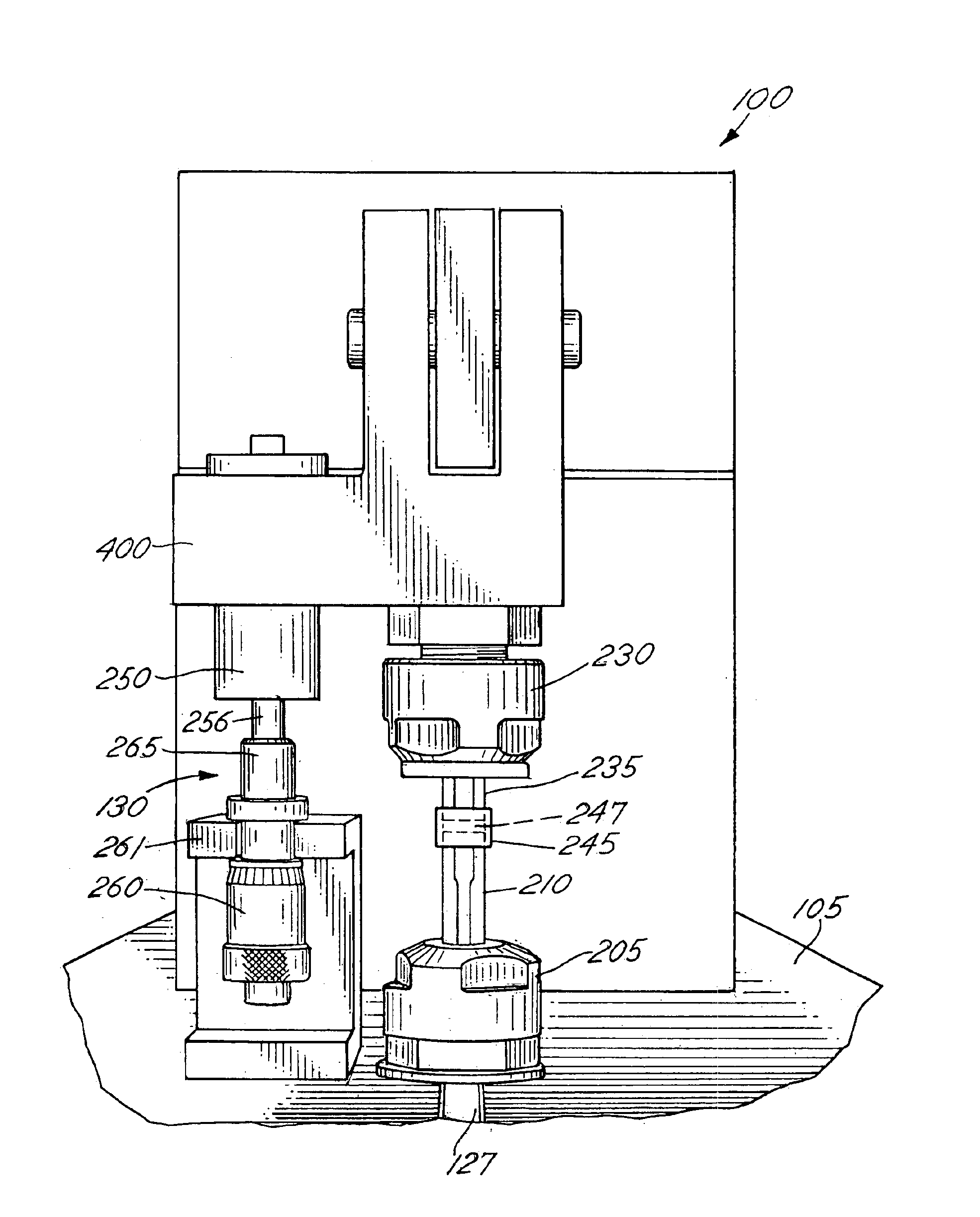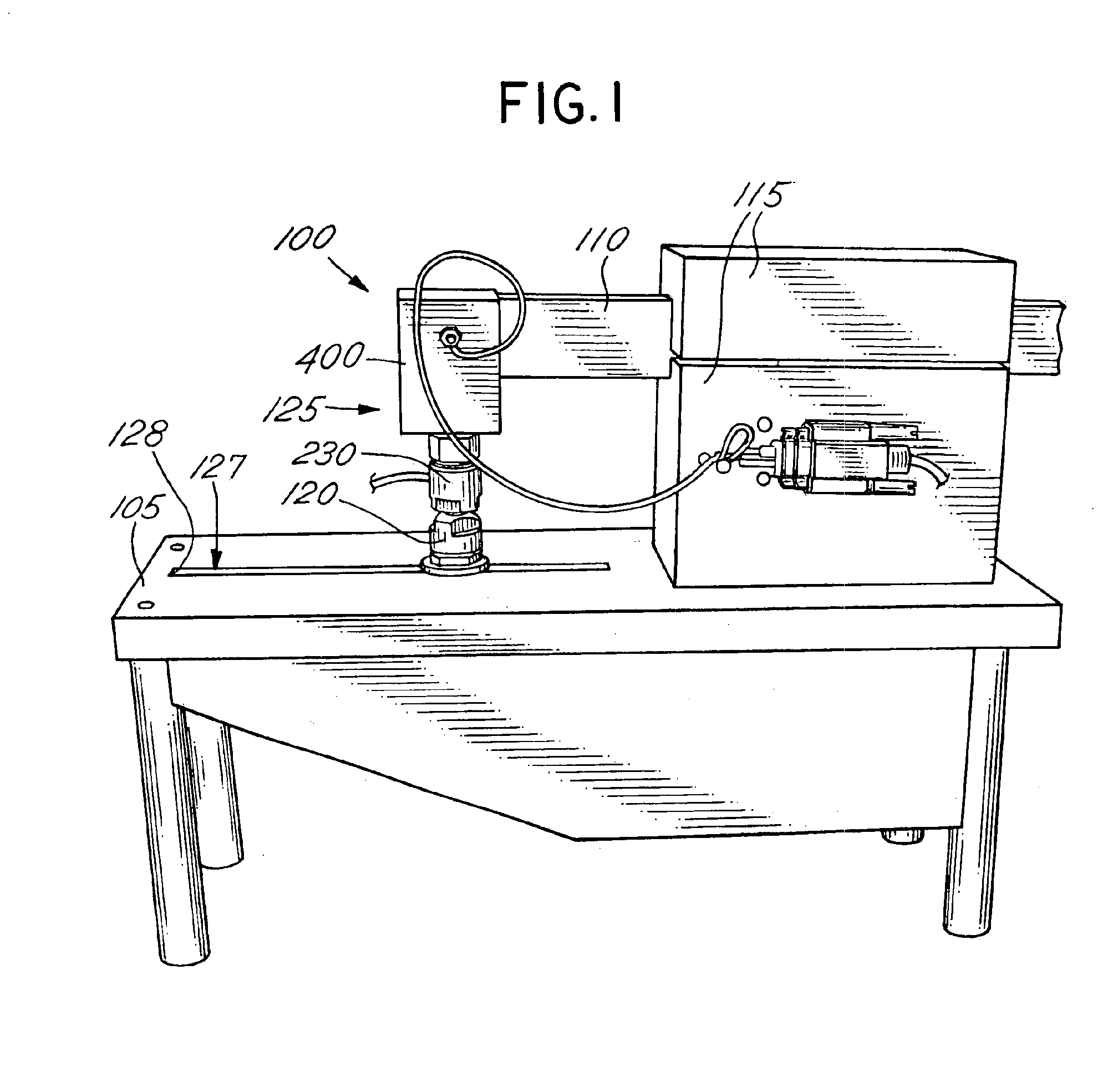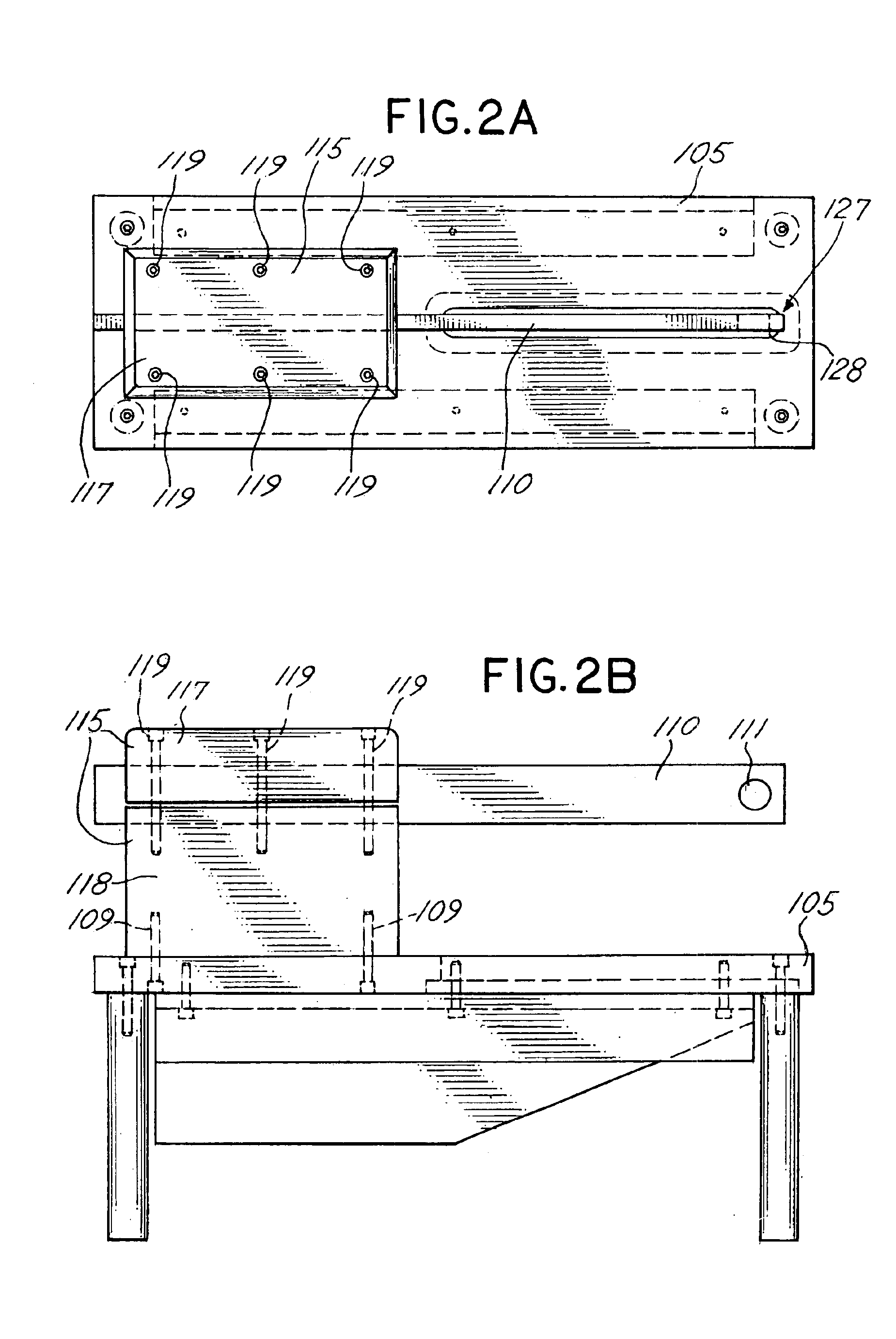Polymer shrinkage tensometer
- Summary
- Abstract
- Description
- Claims
- Application Information
AI Technical Summary
Benefits of technology
Problems solved by technology
Method used
Image
Examples
example 1
The first test example involved curing a commercially available dental composite (TPH®, Dentsply International) by curing the sample for 240 seconds using a dental curing light for curing activation. The test sample was 4 mm in diameter and 4.0 mm thick, simulating the approximate side and bonded surface area of a typical three surface dental filling on a bicuspid tooth.
For set-up of the tensometer 100, the cantilever portion of the beam member 110 was set to 12.65 cm, which resulted in a maximum beam flexure of approximately 20 micrometers during curing. This displacement was chosen as mid-range from values reported in several clinical studies of cuspal deflection during curing of similar restorations.
The tensometer 100 was further configured using two 4 mm diameter quartz rods for the upper and lower rods 235, 210. The end faces of the quartz rods were polished and treated with two coats of a silane coupling agent to enhance polymer adhesion. The rods were inserted into the collet...
example 2
The operator repeated the experiment of example 1, changing only the sample length (i.e., the gap between the quartz rods) to be 0.5 mm. This change in sample length resulted in a C-factor 8 times greater than that for example 1. FIG. 13 illustrates the results for four tests run under this new C-factor. Comparing the results from example 1 and example 2, the results indicate that longer samples with lower C-factors result in higher ultimate stress.
example 3
Lastly, the operator conducted a similar experiment using a different test material (P60®, 3M) and a sample length of 1 mm. The operator performed one test run, resulting in the beam deflection plot 990, shown in FIG. 14. The operator configured the test apparatus to calculate the compliance of various tensometer 100 components. For example, the load, area, length and modulus values for the quartz (glass) rods were used to determine the elongation 991, under stress, of the rods. The composite sample elongation 992 was similarly calculated. Combining the measured beam deflection 990 and the calculated rod stretch 991 and the composite shrinkage 992 results in the total sample shrinkage 993. The test results were found to be close to the expected shrinkage for the particular composite.
PUM
 Login to View More
Login to View More Abstract
Description
Claims
Application Information
 Login to View More
Login to View More - R&D
- Intellectual Property
- Life Sciences
- Materials
- Tech Scout
- Unparalleled Data Quality
- Higher Quality Content
- 60% Fewer Hallucinations
Browse by: Latest US Patents, China's latest patents, Technical Efficacy Thesaurus, Application Domain, Technology Topic, Popular Technical Reports.
© 2025 PatSnap. All rights reserved.Legal|Privacy policy|Modern Slavery Act Transparency Statement|Sitemap|About US| Contact US: help@patsnap.com



